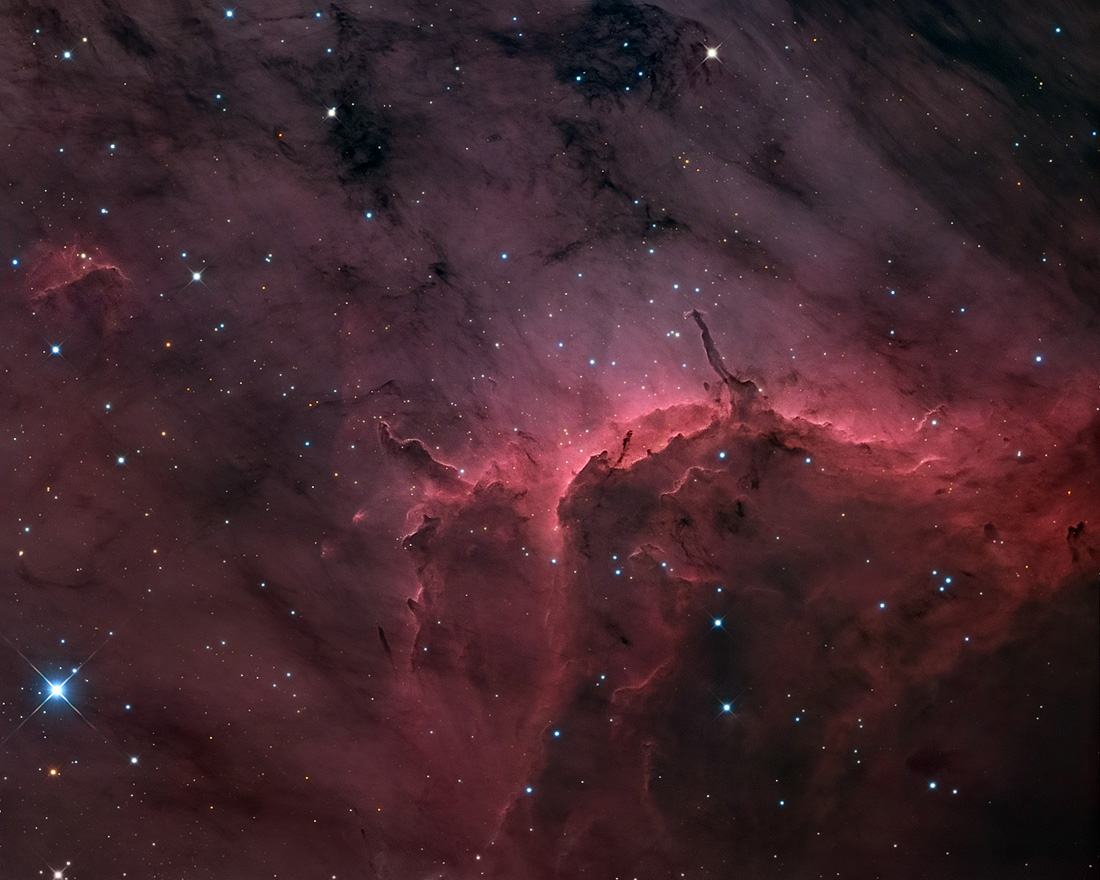Technical details:
Location / Date: Outside of Kopparberg, Västmanland, Sweden / 2019-October
Optics: Orion Optics UK AG12
Mount: 10 Micron GM1000 HPS (Unguided)
Camera: Atik One 6.0 with Astrodon 1,25" RGB Gen 2 E-Series and 5nm H-Alpha narrowband filters
Exposure:
Ha:95 x 300s bin1x1,
R:14 x 150s bin2x2,
G:17 x 150s bin2x2,
B:7 x 150s bin2x2
(cumulative exposure time is 9 hours and 30 minutes)
Processing: Pixinsight and Photoshop
Image details:
The Pelican Nebula (also known as IC 5070 and IC 5067) is an H II region associated with the North America Nebula in the constellation Cygnus. The Pelican Nebula is located nearby first magnitude star Deneb, and is divided from its more prominent neighbour, the North America Nebula, by a molecular cloud filled with dark dust.
The Pelican is much studied because it has a particularly active mix of star formation and evolving gas clouds. The light from young energetic stars is slowly transforming cold gas to hot and causing an ionization front gradually to advance outward. Particularly dense filaments of cold gas are seen to still remain, and among these are found two jets emitted from the Herbig–Haro object 555. Millions of years from now this nebula might no longer be known as the Pelican, as the balance and placement of stars and gas will leave something that appears completely different. IC 5070 is at a distance of about 1800 light-years from earth. (Information from Wikipedia)





